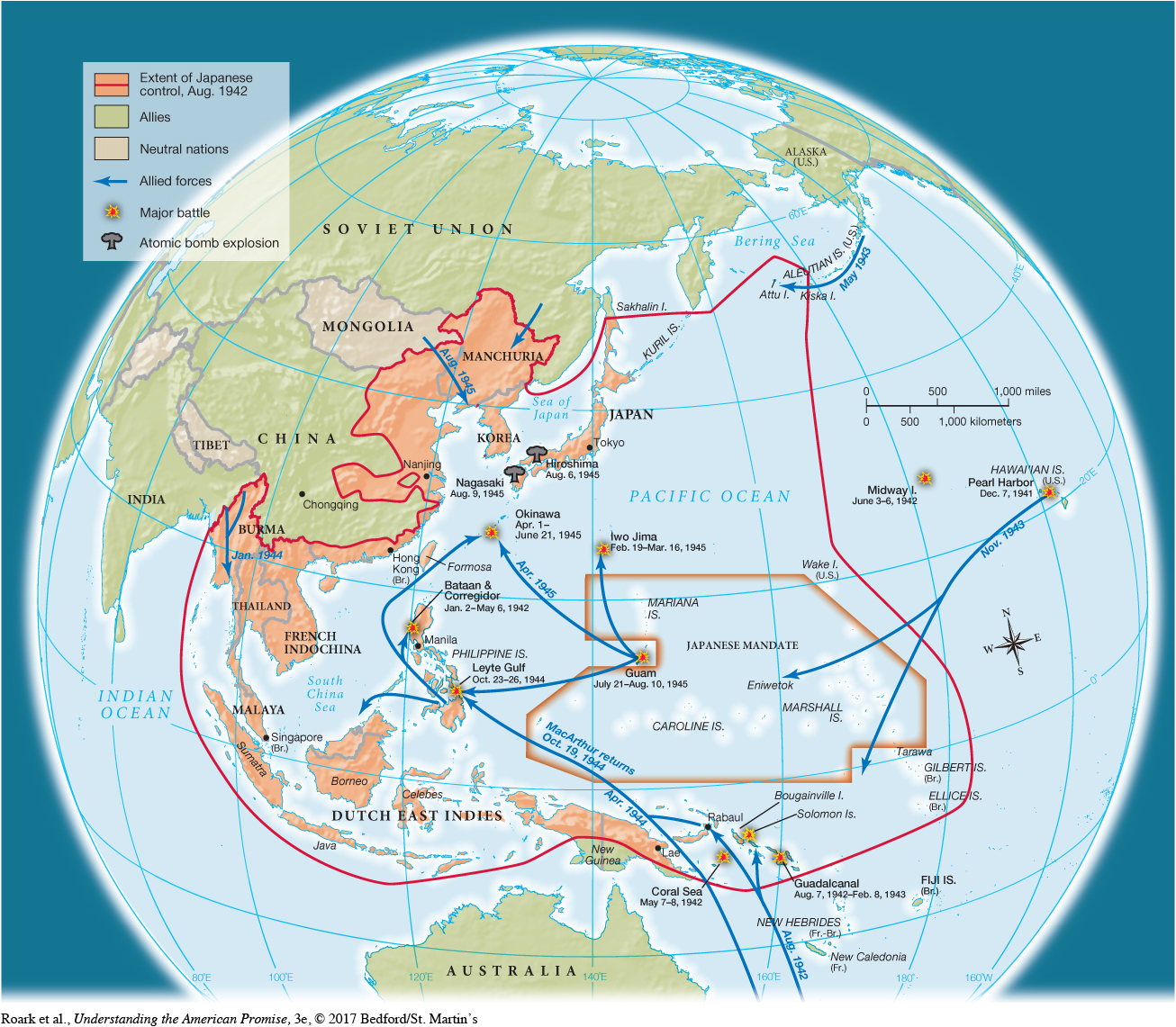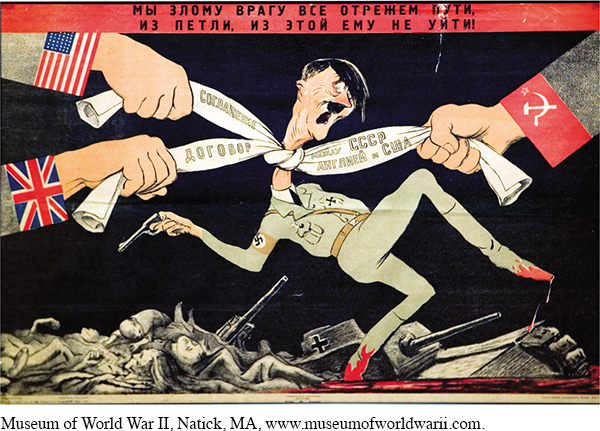The Defeat of Japan
After punishing defeats in the Coral Sea and at Midway, Japan had to fend off Allied naval and air attacks. In 1943, British and American forces, along with Indian and Chinese allies, launched an offensive against Japanese outposts in southern Asia, pushing through Burma and into China, where Jiang’s armies continued to resist conquest. In the Pacific, Americans and their allies attacked Japanese strongholds by sea, air, and land, moving island by island toward the Japanese homeland (Map 25.5).[[LP Map: M25.05 The Pacific Theater of World War II, 1941–1945 – MAP ACTIVITY/

The island-hopping campaign began in August 1942, when American Marines landed on Guadalcanal in the southern Pacific. For the next six months, a savage battle raged for control of the strategic area. Finally, during the night of February 8, 1943, Japanese forces withdrew. The terrible losses on both sides indicated to the Marines how costly it would be to defeat Japan. After the battle, Joseph Steinbacher, a twenty-one-year-old from Alabama, sailed from San Francisco to New Guinea, where, he recalled, “all the cannon fodder waited to be assigned” to replace the killed and wounded. [[LP Photo: P25.10 The Allied War Effort/

In mid-1943, Allied forces launched offensives in New Guinea and the Solomon Islands that gradually secured the South Pacific. In the Central Pacific, amphibious forces conquered the Gilbert and Marshall islands, which served as forward bases for air assaults on the Japanese home islands. As the Allies attacked island after island, Japanese soldiers were ordered to refuse to surrender no matter how hopeless their plight.
While the island-hopping campaign kept pressure on Japanese forces, the Allies invaded the Philippines in the fall of 1944. In the four-day Battle of Leyte Gulf, one of the greatest naval battles in world history, the American fleet crushed the Japanese armada, clearing the way for Allied victory in the Philippines. While the Philippine campaign was under way, American forces captured two crucial islands—Iwo Jima and Okinawa—from which they planned to launch an attack on the Japanese homeland. To defend Okinawa, Japanese leaders ordered thousands of suicide pilots, known as kamikaze, to crash their bomb-laden planes into Allied ships. But instead of destroying the American fleet, they demolished the last vestige of the Japanese air force. By June 1945, the Japanese were nearly defenseless on the sea and in the air. Still, their leaders prepared to fight to the death for their homeland.
Joseph Steinbacher and other GIs who had suffered “horrendous” casualties in the Philippines were now told by their commanding officer, “Men, in a few short months we are going to invade [Japan]. . . . We will be going in on the first wave and are expecting ninety percent casualties the first day. . . . For the few of us left alive the war will be over.” Steinbacher later recalled his mental attitude at that moment: “I know that I am now a walking dead man and will not have a snowball’s chance in hell of making it through the last great battle to conquer the home islands of Japan.”
Understanding the American Promise 3ePrinted Page 733
Section Chronology